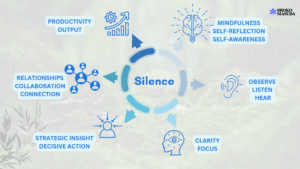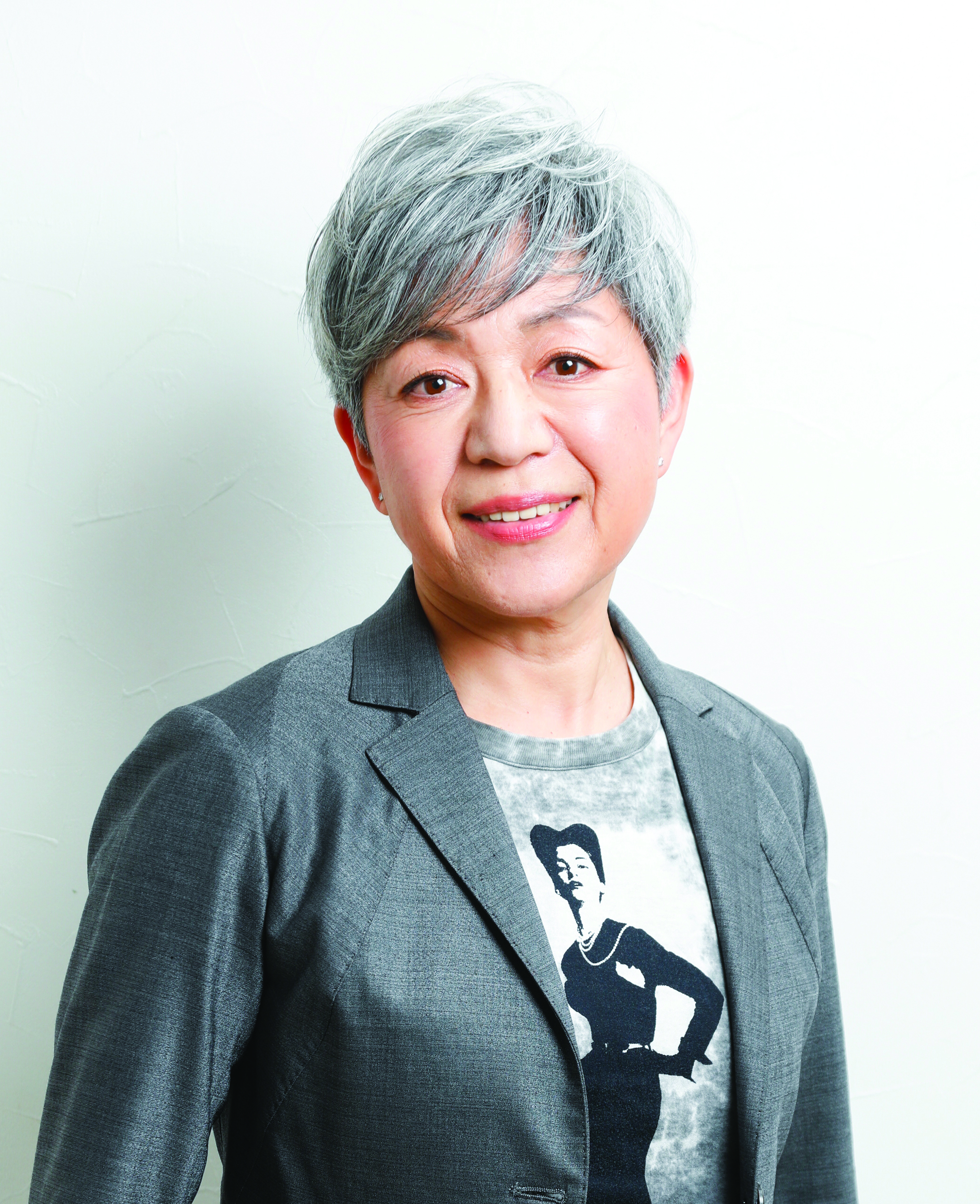 by Zoë Billington, User Research & Customer Insights, Santa Monica, California, zbillington@gmail.com
by Zoë Billington, User Research & Customer Insights, Santa Monica, California, zbillington@gmail.com
Shoko Masuda, Leadership Coach and Co-Founder, SHIFT Women’s Leadership Training Program
This quarter, I got reacquainted with the sound of silence through a conversation with Shoko Masuda. Masuda is a former marketing executive, now leadership coach and co-founder of SHIFT Women’s Leadership Training Program. As the first Japanese woman at American Express to work in overseas leadership in Hong Kong, London, and New York, Masuda learned a lot about working as a woman and an Asian woman within largely male, often westernized, corporate cultures that emphasize more talking than listening. These days, Masuda’s focus is on advancing minority female professionals through coaching. She combines her training and expertise in coaching with her 20 years of experience leading and navigating teams in complex organizations in multicultural environments.
Zoë: Let’s start as we usually do in this column: with the 10,000-foot view of your career. How do you tell the story of your career and how you got to where you are today?
Shoko Masuda: I’m a former corporate research executive turned leadership coach and trainer. I come from a very small town near Mount Fuji in Japan. I learned English by watching Sesame Street. I felt inspired by American values, and I really wanted to live abroad, particularly in the U.S. I began working for American companies American Express and Aetna. It was during this time that I got an invitation from my friend, Sharon, to join a leadership training session. Despite not knowing the specifics, I thought that knowing how to manage people would benefit me in my job, so I said yes. It turned out to be a coaching training session, and that’s how my journey as a coach began.
Zoë: Wow, am I understanding this right? You went to this training thinking it was more of a people management training, but it turned out to be a training session for becoming a leadership coach?
 Shoko: Exactly. I didn’t know anything about coaching at the time, but once I learned it was training to become a coach, I immediately saw its value for leaders and managers in the research and insights industry. My motto is to say yes to the unknown, to take a leap, and explore. That became the beginning of my new career path, and here I am today.
Shoko: Exactly. I didn’t know anything about coaching at the time, but once I learned it was training to become a coach, I immediately saw its value for leaders and managers in the research and insights industry. My motto is to say yes to the unknown, to take a leap, and explore. That became the beginning of my new career path, and here I am today.
Zoë: What are some things you experienced throughout your research and insights career that fueled your desire to transition to coaching full-time?
Shoko: Throughout my career in client-side research, I was very fortunate to work with highly capable, incredibly smart researchers. I saw individuals, particularly women, who often faced barriers to advancing to higher positions. Despite their competence, they were often reporting to male managers. I felt compelled to help them advance their careers so that those women could create a corporate culture or working environment that is kinder to women and brings in more talented women to sustain our industry.
Additionally, I observed situations where great research and recommendations were ignored by senior executives due to various reasons like cost implications or technological challenges. For example, I’d hear things like, “Oh, this work is great. I agree with the findings. But it seems to me that the root cause of the customer issue is technology areas, and I cannot do anything until the technology is fixed.” This lack of urgency and accountability to actually change anything frustrated me. I thought, if we really want to change anything, it is the leadership that really matters; it’s not just the technical skills or being a good researcher. That also really motivated me to get into coaching and leadership training.
Zoë: It sounds like you want to empower leaders to lead change rather than get hung up on hurdles. How do you define leadership or what makes a good leader?
Shoko: That is the big question, isn’t it? Leadership, in my view, is about three components, which I call the three C’s: compassion, curiosity, and courage. Compassion goes beyond empathy; it involves understanding and taking action to address others’ needs. Curiosity involves a genuine interest in understanding others and their perspectives. Not just asking questions, but sincerely wondering what’s happening. Courage is essential, especially when venturing into the unknown or trying new approaches, even if they might fail. Along with these traits, a good leader must have a clear vision, effective communication skills, and trust in their team.
Zoë: What is the impact of a leader who practices compassion, curiosity, and courage?

Shoko: Maya Angelou once said, “People will forget what you said, people will forget what you did, but people will never forget how you made them feel.” What she means is that emotions play a significant role in shaping our memories and opinions of others, especially of leaders. People follow leaders who make them feel valued, supported, and cared for. A leader’s behavior, actions, and attitude contribute to creating this positive environment.
To give you an example from my life, years ago, when I moved from Japan to the U.S., my boss took me to the CEO’s office. I was horrified, thinking, “Oh my god, I’m going to meet the CEO of American Express without having anything prepared.” My boss said, “It’s fine, we have some time. I want to introduce you to him, and you can just ask questions.” I still remember how the CEO listened to me so intensively without saying a word. I felt like, “Oh my goodness, he is really listening to me. He thinks my opinions matter.” That was such a great example to me of how leaders should behave or act.
Zoë: In your opinion, are these qualities that can be taught? If so, how do you teach a leader or someone trying to move into a leadership role to have compassion, curiosity, and courage?
Shoko: It starts with awareness. Leaders need to be aware of their strengths and areas for growth. Then, they must be motivated to develop these three traits and possess the capability to do so. Practice is crucial; leaders must actively apply these qualities in their interactions and decisions. Finally, they should feel accountable for demonstrating compassion, curiosity, and courage in their leadership roles. We call this series of steps the leadership pipeline.
Zoë: In your coaching practice, you draw a connection between the values of the Japanese tea ceremony and leadership principles. Can you talk about that connection and how it plays a role in your coaching style?
Shoko: Today’s work environment is volatile, uncertain, complex, and ambiguous— “VUCA” for short. We believe there are so many conflicting priorities, and it seems like we have to do everything right now. There’s no space in our minds to rest or have a quiet moment.
In the Japanese tea room, we are asked to be quiet as we sit down to have a cup of tea. Fairly simple, right? It’s really created to make space for peace of mind. There, I started learning that the tea ceremony practice principles—harmony, mutual respect, clarity, and calmness—are the four components that are so relevant to where we are in this VUCA world.
I started looking into the history of the tea ceremony. It started in 16th-century Japan, when there were civil wars everywhere in the country, with a chaotic, uncertain, and consistently changing situation that divided the country. Before or after their battles, the samurai lords came to the tea table to have peace of mind. I saw a connection between that world and our business world. We are so tired and exhausted every day, and we can really benefit from taking a moment to be still. So that’s how I came to think there must be something useful in the tea practice, and that the silence of the tea room might be helpful for us.
Zoë: Let’s talk more about silence. Why is silence important?
Shoko: Something I felt very acutely when I moved from Japan to the U.S. was that everybody said you have to speak up. In meetings, you speak up to show your value. But in Japan, silence is golden, and you have to be humble; you don’t have to show off. We say be like a hawk, who is competent and strong and always hides its sharp claws. That’s a very different culture from the one I experienced in the U.S. In general, and particularly in Western cultures, people feel very awkward about being in silence. They call it “dead space,” “hearing crickets,” or “awkward silence.” Silence always has some negative connotation, and people always try to fill it.
A Japanese woman, Haru Yamada, even did a study in 2015 that found that American businesspeople, on average, can tolerate silence for four seconds. While in Japan, it’s double that: about eight seconds. I think there needs to be a balance; in the U.S. context, we can use silence strategically to be more effective.
Think about it like this: when you say something, and then somebody responds, and then you say something, you only have four seconds to listen, comprehend exactly what they’re saying, and then prepare your response. You probably need time to do that in a very thoughtful way. A quality response is incredibly important to having a quality conversation. Also, based on some research, it is true that having a silent or quiet moment will lower blood pressure and also reduce stress, and sometimes that helps to reduce insomnia. If you think about the benefit of silence on the individual level, it can encourage us to focus and concentrate better. When we have more time to think, it benefits the workplace. When a team can embrace silence, it creates more space for other people to speak up, an increase in understanding, and, therefore, a reduction in unnecessary conflicts or misunderstandings.
Zoë: I’ll bet that the qualitative researchers reading this are thinking the same thing as I am: we’ve been trained to be comfortable in silence. Can you talk about why qualitative researchers are poised to bring silence into the workplace?
Shoko: Qualitative researchers have a beautiful skill set for listening and also strategically using silence. If you’re watching focus group interviews, you see that a good moderator is patient and gives a lot of space to the respondents, never ever pushing them. They don’t give leading questions or loaded questions or put their own words into the respondents’ mouths. That is exactly the coaching approach that I’m talking about. These skills are so beautifully transferable for the manager to use when having any conversation: be patient and give sufficient space for your team members.
An example I remember is about a journalist named Kate Murphy, who is described in her book You’re Not Listening: What You’re Missing and Why It Matters (2020), observing a legendary focus group moderator and moderator trainer, Naomi Henderson. She was amazed at how Henderson phrased a question in such a way that people answered in a meaningful way. A supermarket chain really wanted to know why people go to that supermarket in the middle of the night. An impatient stakeholder asked why we don’t just ask the shoppers, “Why do you go there at night?” This legendary moderator asked in a different way that gave them a lot of space: “In the last couple of months, when you went to that supermarket after 1 a.m., tell me about that.” There was then a pause. A woman who was very quiet and didn’t speak before said, “Oh, well, I just have a smoke and then go to that supermarket to meet Ben and Jerry.” From that response, you can see what kind of life that woman had. Having the ability to ask a spacious question and create spacious silence can really transform your conversations.
Zoë: As we wrap up, can you share actionable tips for working on these skills at different career stages?
Shoko: I’d start by encouraging people to try using strategic silence—because this is not only up to the leader, but also relies on each individual. If you have a difficult situation at work, try to pull yourself out of that situation for a couple of seconds by taking a deep breath, slow and deep. Having slow breathing will help you to calm down and be less anxious. Then, you can think more clearly and respond. So, I would first say, let’s pause for a moment. Then you can really stop and count to three and see what is happening. During that time, you can check in with your body, with your emotions—it’s incredibly important that you can articulate your emotions and not just say, “I’m angry.” Anger could mean you’re disappointed with that person. Or, are you frustrated? Or jealous? Once you set aside the emotion and articulate exactly what’s going on, you start using your frontal cortex, which is where executive function happens. Then, you can take a couple of seconds to think through your response, with emotions set aside. Going second by second like this might feel like an eternity right now—but in the moment, it could be a very useful five seconds to make you a better communicator when you have any conflict, difficult conversation, or argument.
The second thing I suggest is relevant for anybody who’s ever complained that they don’t get the feedback they need to grow as a leader. You have to take ownership, and there’s a better way of doing it. Often, people just say, “Can you give me feedback?” or “Feedback is a gift; please give it.” But you have to be very specific. So, I always suggest if you have certain things on your mind, the easiest way to get it is: after the meeting or after the presentation, say, “Hey, based on your observations for today’s meeting, could you give me one thing I can do better next time?” It’s much easier for people to give you one thing. Some organizations might have a stronger feedback culture rooted in their conversations, but the point is you have to be your own development coach. You have to be accountable for that rather than rely on your boss or your peers to do it.
Zoë: Thank you, Shoko, that’s some great actionable advice to end on. May I ask: could you give me one thing I could do better next time I interview someone for Luminaries? 😉



